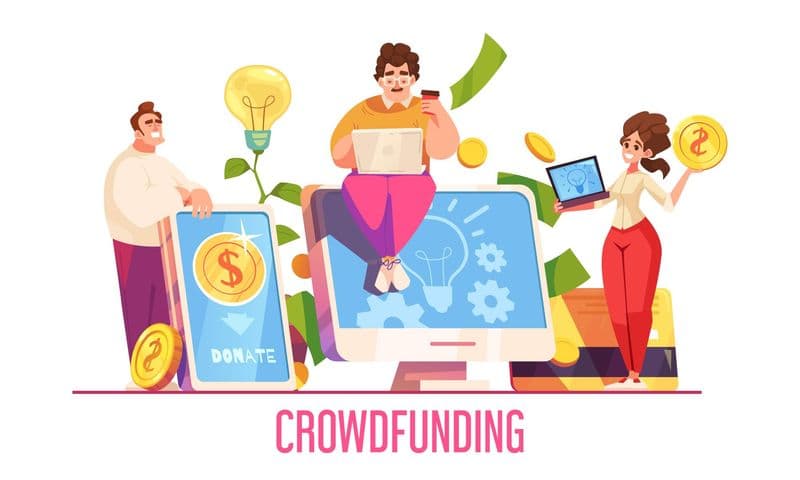Change is happening in the insurance industry. New opportunities for insurance companies, for example, with emerging technologies such as artificial intelligence, machine learning, and big data analytics, are, for instance, to improve their prospecting and to acquire new customers more efficiently. Finally, the right technology tools can allow them to reach out to leads on multiple channels identify and qualify leads, and convert more prospects into customers.
In this article, we will discuss some of the latest technology innovations for insurance industry prospecting. This post will help you understand how these technologies can create leads by generating leads, data analytics to expose customer's heads, predicting leads qualification, marketing campaign, and outreach automation, and providing a solution for project management and handling the complete sale process from the beginning. These technologies allow insurance professionals to streamline tedious tasks, focus on the human element of relationship building, and increase results.
Lead Generation Tools

Prospecting is the process of first identifying potential customers. Lead generation refers to methods for grabbing information about people and companies that might want to buy insurance products. Below are some of the best technologies used by insurance professionals to generate more leads.
CRM Software
Managing databases of prospects and customers requires the use of customer relationship management (CRM) platforms like Salesforce. The CRM software is not just for contacts and emails but is also used to track interactions between channels store customer documents and create collaboration.
Insurance agencies can use CRMs to identify cross-sell and upsell opportunities within their client portfolio. Features like lead scoring help agents determine sales readiness based on engagement metrics and profile details. Most CRMs integrate with marketing automation tools for a unified lead-nurturing workflow. They provide the central hub for prospecting efforts.
Find more information about the software in insurance here: https://www.luxoft.com/industries/insurance.
Lead Exchange Services
Many insurance carriers and agencies buy leads from third-party vendors that specialize in generating leads through methods like pay-per-click advertising and website forms. Lead exchanges then screen the leads using verification tools and sell them to insurance companies looking to buy leads in specific regions or lines of coverage.
Working with specialized lead generation companies allows insurance professionals to focus less on attracting inbound interest and more on qualifying and converting known opportunities. The lead exchange model offers scale and targets insurance shoppers actively looking for policies.
SEO & Content Marketing
With 63% of shoppers now beginning their buying journey through an online search, search engine optimization (SEO) is non-negotiable. Insurance brands must create informative, relevant website content optimized for keywords that prospects use to research insurance products.
Content marketing involves publishing blogs, guides, videos, and other media designed to attract visitors from search engines as well as demonstrating thought leadership. Embedding calls-to-action within this content to download gated offers can further generate lead capture forms.
In addition to organic search optimization, insurance websites should highlight phone numbers, online quotes, and agent contact forms to facilitate the lead generation process.
Social Media Lead Ads
Social platforms like Facebook, Instagram, Twitter, and LinkedIn present prime opportunities to connect with prospects where they spend time online. Insurance companies can run targeted lead ads optimized for conversions by analyzing demographics and online behaviors.
For example, data can reveal the likelihood of homeowners in a certain county asking for a home insurance quote to be in the age group of 25 to 45 years, agents can create social media ads targeting such high-intent users. These ads have direct links to quote forms or insurance website lead capture pages which makes them generate more qualified prospects.
Lead Management Software
Once insurance professionals receive leads from different sources, they require technology to score, qualify, communicate with, and convert more of them efficiently. Lead management software brings all prospect information together and automates the lead through the sales funnel process.
Lead Scoring & Segmentation
Not all leads are created equal. Lead scoring models rate incoming leads based on characteristics that predict their sales readiness. Criteria often include demographic data, behaviors like downloading a brochure, and engagement metrics such as email open and response rates. Lead segmentation then groups prospects into categories like hot, warm, or cold leads based on the lead scores.
Insurance agents can then tailor their outreach approach depending on a lead’s score and segment. For example, hot leads may receive immediate phone calls while cold leads enter nurturing sequences with educational content. Dynamic lead scoring rules can also automatically detect when prospects cross thresholds that advance them into higher-priority follow-up categories.
Predictive Analytics
While traditional lead scoring uses past conversion data to gauge sales potential, predictive analytics takes it a step further. Advanced machine learning algorithms process thousands of data points to serve up statistical models that provide hyper-accurate lead qualification.
Predictive analytics measures the fit between prospects and historical customer profiles that deliver ROI. It then assigns a “fit score” indicating which leads align most closely with profitable segments. Focusing attention on engaging these high-probability opportunities first increases conversion rates.
CRM Task Automation
There are only so many hours in a day for agents to contact leads. CRM software helps insurance professionals scale their prospecting efforts through task automation.
- Built-in workflows triggered by rules can automatically:
- Send personalized emails when a lead is assigned to an agent
- Notify agents of new leads matching target customer profiles
- Send follow-up messages to leads if no activity after a set period
- Schedule appointments and add calendar reminders
- Log activity like calls and emails to leads
- Transfer stale leads to nurture campaigns
Alert managers when hot leads are not addressed within service level agreements (SLAs)
These automation tools ensure high-quality leads do not slip through the cracks while empowering staff to focus their efforts on the highest-value prospect interactions.
Omnichannel Marketing Automation
One-size-fits-all marketing no longer resonates in today’s customer-centric era. Prospects expect personalized outreach via their channel of choice, whether that’s email, text messaging, social media, or even old-fashioned direct mail.
Insurance agents can orchestrate omnichannel campaigns using those targeted messages with the human touch without having to go through the manual work of creating the message and its distribution. It has built-in libraries of professionally designed templates that make it very easy to execute multi-wave lead nurturing sequences with tracking and reporting.
These platforms integrate with CRM software and predictive analytics for data-driven campaign personalization down to dynamic content and real-time optimization. Automating manual tasks like reminder calls and emails increases productivity while conveying helpfulness through tailored content.
Conversational AI Chatbots
Chatbots simulating human conversations can qualify leads 24/7. Natural language processing identifies prospect needs, machine learning dynamically adapts questions based on responses, and analytics inform agent follow-up.
These AI assistants guide visitors through Q&A workflows such as policy-type assessments by asking a series of questions. Based on the responses, a chatbot can instantly route prospects to the right agent, deliver quotes, schedule meetings, and capture lead details – no human effort is required.
Studies show over 50% of customers are open to purchasing insurance through conversational chatbots. Their interactive nature keeps visitors engaged while providing sales teams with lead intelligence.
Data & Analytics
Targeting high-converting prospects requires understanding customer demographics, behaviors, needs, and motivations. Advanced analytics solutions reveal actionable insights to inform an insurance agency’s prospecting strategy.
Predictive Analytics
Machine learning algorithms are used in sophisticated predictive modeling that combines historical sales data and third-party data sources while performing the analysis. Predictive analytics looks at literally hundreds of combinations of attributes to find patterns that characterize high-value customer segments that are ready to be targeted in prospecting campaigns.
Key inputs include:
- Firmographic data like company size and industry
- Technographic details such as device types
- Demographic information like location and age
- Psychographic attributes including interests and lifestyle
- Behavioral patterns relating to digital channels
- Response metrics for past marketing campaigns
- Product usage for existing policyholders
- Claims history driving retention risks
Insurers can deploy predictive analytics across the entire policy lifecycle – new business acquisitions, renewals, and cross-selling. Models accurately forecast lead conversion rates, revenue potential, campaign ROI, and even churn risks for more informed prospecting.
Customer Data Platforms
Legacy CRM systems contain siloed datasets focused on sales interactions rather than complete customer profiles. Customer data platforms (CDPs) consolidate disparate data streams into unified profiles with insights that fuel predictive modeling.
CDPs sync data from all platforms including the website, mobile apps, forms, surveys, email systems, chat tools, and more. Robust analytics dashboards help insurance personnel identify trends and patterns to refine prospect targeting.
Customer data platforms also enable insurers to create integrated orchestration of data-driven campaigns when working with marketing automation systems. These enable high CTR, excellent conversion rate, and higher retention.
Contact & Lead Intelligence
Macro-level customer and prospect data is great but with contact and lead intelligence, you can see micro micro-level insights into hyper-targeting key decision-makers. These are the tools that find out the real-time contact changes, hierarchy structures, and trigger events which-indicate interest.
Insurance agencies need accurate contact data and individual insights to know whom to reach out to, and to be personalized during prospecting. Key features include:
- Contact verification and list cleaning services
- Lead and company enrichment data
- Technographic profiles by contact
- Real-time alerts for new hires and departures
- Intent signals based on website activity
- Peer comparison benchmarks
- Persona segmentation and ideal customer profiling
This surgical-level intelligence enables precise timing for making the initial connection with contacts primed to engage. Ongoing monitoring further empowers agents to adapt messaging as prospects enter new life stages or job roles.
Sales Enablement Platforms
Prospecting is the starting line for increasing insurance policy sales. Converting interest into revenue requires arming agents with the right mix of skills, knowledge, and tools to progress opportunities through the finish line. Sales enablement platforms provide multimedia training materials coupled with built-in coaching workflows.
On-demand educational resources help insurance professionals master product details, best practices for needs-based assessment, common objections handling, relationship nurturing, and closing techniques. Structured coaching plans supply managers with tracking and alerts to monitor progress.
Just-in-time content delivery features contextually serve relevant sales materials based on prospect interactions and queries. By syncing enablement platforms with CRM and marketing systems, insurers can scale product proficiency across the team while personalizing engagements to accelerate conversions.
Presentation & Proposal Software
Custom sales presentations and policy proposals require manual formatting effort, which hinders productivity. Insurance sales teams can modernize these documents with user-friendly applications that integrate visual asset libraries for professional designs with just a few clicks.
Drag-and-drop editors allow building branded templates that unify proposals, presentations, and reports while enabling personalization at scale. Bulk content uploading simplifies adding large volumes of products, prices, and imagery. Data integration with existing systems enables dynamic content personalization.
Document automation streamlines the creation of proposals and presentations to boost sales efficiency. Prospects benefit from resonating proposals aligned with their unique needs while insurance personnel focus more energy on revenue-generating activities.
Sales Prospecting Tools Comparison
With new sales technologies continuously emerging, it can get overwhelming to evaluate options to determine the best tools for insurance prospecting. Here is a comparison chart summarizing some of the key capabilities of different categories of solutions:
Category | Key Features | Main Benefits |
CRM Software | Contact management, interaction tracking, workflow automation | Centralized database, increased efficiency |
Lead Exchanges | Targeted lead lists for sale | Outsourced lead generation |
SEO & Content Marketing | Optimized website content and media | Increased visibility and lead capture |
Social Media Lead Ads | Targeted ads linked to landing pages | Low-cost lead generation at scale |
Lead Management Tools | Lead scoring, predictive analytics, task automation | Focus efforts on sales-ready leads |
Marketing Automation | Omnichannel nurture campaigns | Personalized, multi-touch outreach |
Conversational AI | Chatbots for lead qualification | 24/7 automated lead engagements |
Customer Data Platforms | Unified customer profiles, analytics | Data-driven targeting & modeling |
Sales Intelligence | Buyer insights for contacts | Fine-tuned prospect prioritization |
Sales Enablement Platforms | Multimedia training, coaching | Accelerated rep productivity |
Presentation Software | Templates, automation, personalization | Streamlined proposal creation |
Today’s modern buyer expectation of the perfect, ultimate personalized, omnichannel engagement demands an orchestrated martech stack of an organization, to deliver. Here is an overview of key considerations when evaluating prospecting solutions:
- Integrations. As an ecosystem, the technology should not be disjointed tools. Choose platforms with an open API environment, built-in connector, and an integration marketplace.
- Analytics. Prospecting efforts require measurement for continuous optimization. Ensure platforms provide real-time visibility into campaign performance and conversion metrics.
- Automation. Manual processes limit productivity. Seek solutions that leverage workflow triggers, AI, and machine learning to automate repetitive tasks.
- Personalization. Mass marketing misses the mark. Look for tools that empower data-driven personalization across channels at scale.
- Mobility. Insurance prospects engage on the go via mobile devices. Solutions must seamlessly support responsive experiences.
- Scalability. Solutions need flexibility to adapt as prospect volumes and team sizes evolve over business growth phases.
- Security. Prospect data requires protection. Validate vendor security and compliance measures are enterprise-grade.
The best technology stack is one that uses best-of-breed applications that are aligned to a cohesive prospecting strategy. By prioritizing platforms that come out of the box, we remove data silos while supporting.


